In November we held our annual Fall Forum at BYU, Provo. It was a fascinating presentation given by Dr. Paul Alan Cox.
Dr. Cox has lived in remote island villages searching for new medicines. He was awarded the Goldman Environmental Prize, sometimes known as the Nobel Prize of the Environment and was named one of TIME magazine’s eleven “Heroes of Medicine” for his discovery of a new HIV drug candidate.
His conservation foundation, Seacology, has set aside over 1.5 million acres of rain forest and coral reef in 60 countries around the world.
Cox was both a Danforth Fellow and a National Science Foundation Fellow at Harvard where he received his Ph.D. He currently serves as the Executive Director of the Brain Chemistry Labs in Jackson, Wyoming, a not-for-profit research institute focused on finding new treatments for ALS and Alzheimer’s disease. Below, we include the video recording from our YouTube Channel and the transcript:
Dr, Cox:
Many thanks to Professor Oscarson and the generous, overly generous introduction. Thanks Professor Hanley and Serena and some former students and even a dear friend of mine from boy hood, Jim Dain: great to have you here.
I’d like to talk tonight about the Creation and focus on three elements. I’d like to talk about the stars; the plants; and people. Then I’d like to argue how that could be a basis for a conservation ethic by disciples of our Savior as well as some unique capabilities we have in providing leadership to a world that so desperately needs it on these issues right now.
It’s striking to me the emphasis that is given to the Creation in teaching the gospel. We hear about the Creation over and over. The Book of Genesis portrays an orderly sequence, the creation of heavens and Earth, but it appears that that book may be a redacted version of a more detailed account given to Moses we have fragments of in the Pearl of Great Price. The Pearl of Great Price also recounts the panorama of creation as revealed to Abraham.
We repeatedly hear the details of this creation in sacred places. The importance of that creation is made clear in the Book of Mormon. When Lehi received the brass plates out in the desert, he looked at them and “beheld they contained the five books of Moses which gave an account of the creation of the world and also of Adam and Eve who were our first parents” (1 Nephi 5:11). Later, as Ammon and his compatriots took a missionary journey to the sworn enemies of the Nephites, Ammon, because of his faithfulness was given the opportunity to teach King Lamoni: "He began at the creation of the world and also the creation of Adam (Alma 18:36). This practice of teaching about the creation was continued by his companion Aaron who subsequently taught King Lamoni’s father (Alma 22:12). I’d like to suggest that those two events changed the hearts of an entire nation. In fact, the Book of Mormon in so many ways is a manual of missionary work to political elites. The Jaredite plates translated by King Mosiah through the gift of God included an account of creation (Mosiah 28:17; Ether 1:3). At the end of the Book of Mormon, Moroni’s final exhortation to readers of that book encourages them to remember “how merciful the Lord has been to the children of men, from the creation of Adam even down until the time they shall receive these things and to ponder it in your hearts” (Moroni 10:3). We have frequent reminders in our sacred ordinances and in the scriptures and in the writings of the living prophets that we should be aware and think about the Creation. What can we learn by pondering the Creation as portrayed in the scriptures and in the temple?
I suggest there are three important principles that emerge from all these accounts of the creation. First of all, that the Earth and the entire universe was created by a loving Heavenly Father. Secondly, that the plants and animals we share this Earth with are important to Him. The Lord refers to them in modern revelation as “my creatures” (D&C 104:13). And third, that all human beings are children of God and of divine provenance.
It follows from these three principles that reverence towards the Creation reflects reverence and respect for the Creator. Since we are surrounded continuously by the handiwork of God, conservation can be transformed into an act of worship. So I would like to briefly consider the stars, the planets, and our fellow human beings that we share this planet with. I will conclude with a few examples of conservation that represent personal acts of worship.
So first of all, the stars. This is my home in Jackson Hole, Wyoming. Just when we left Friday night to come down here, I called Barbara outside to look at the stars, which burned so brightly in the night sky.
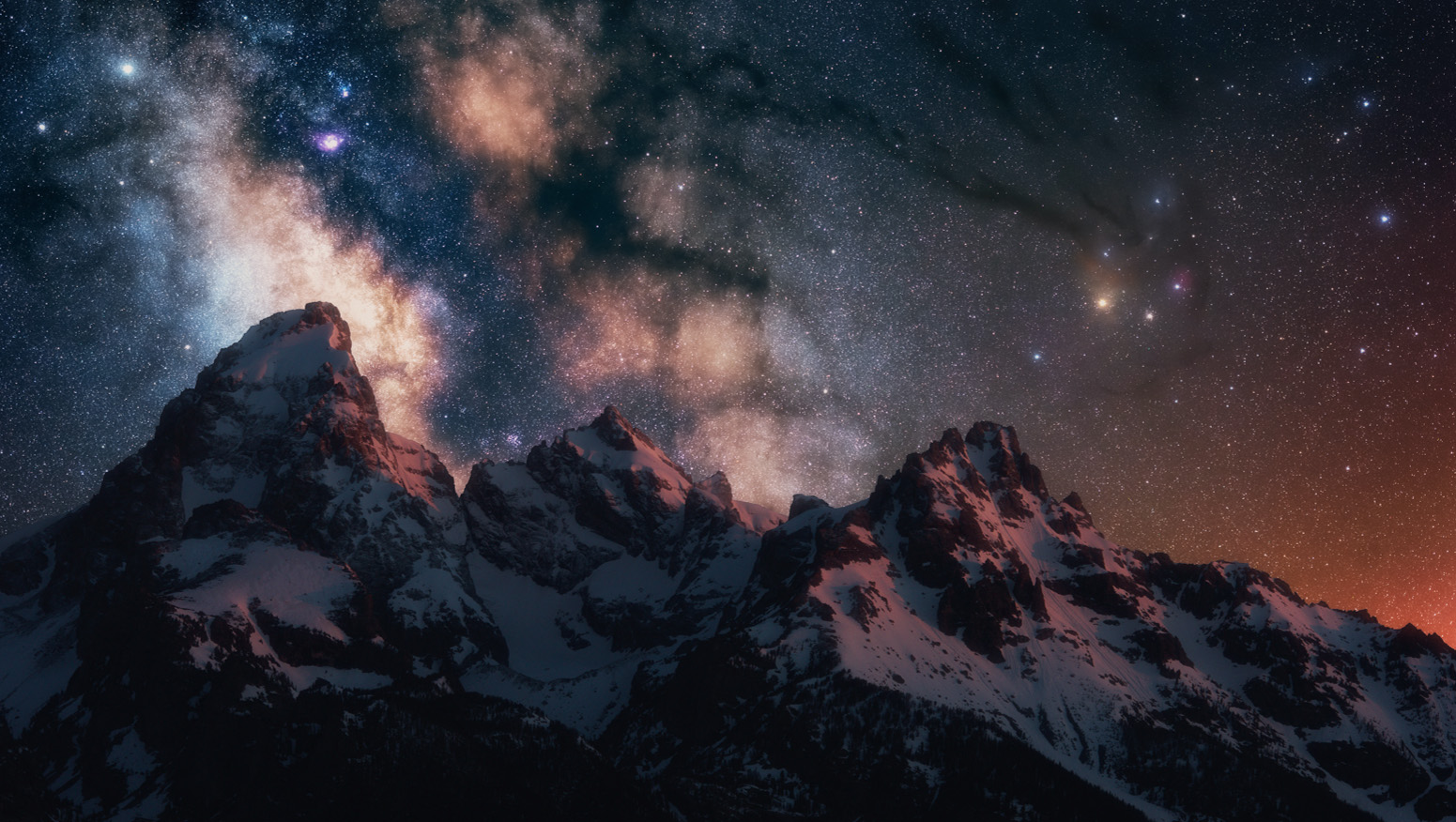
I had a friend, a dear friend, from Japan who visited and when I took her and showed her the stars outside the little ranch we live on, she started weeping. I said “why are you weeping?” and she said “I’ve never seen the Milky Way before”. I asked “you never looked up?” She said “I’ve lived my entire life in Tokyo, I haven’t seen the stars”.
Have you ever gazed at the stars at night? Ralph Waldo Emerson wrote, “if the stars should appear one night in a thousand, how would men believe and adore and preserve for many generations the remembrance of the city of God which had been shown!”
In the Psalms, David said “When I consider thy heavens, the work of thy fingers, the moon and the stars which thou hast ordained, what is man that thou art mindful of him? and the son of man that thou visited him?” (Psalms 8:34).
As a young missionary, my theory in those days was that at the church office building workers would assemble the applications and photographs of those seeking to be called on a mission. Most could go anywhere, perhaps a few applicants would be sent back to their bishop to get a haircut or whatever. However, there were likely a very few mission applicants that they couldn’t figure out where to hide them so they wouldn’t embarrass the church. That’s probably the pile my application fell into. The same process, I’m sure, was repeated in Samoa. They took one look at me and dispatched me to the most remote island, the most remote village, in the mission-- a place that filled the heart of every Samoan missionary with terror -- and then forgot about me. I was in heaven for about six months.
So as a young missionary, posted to a remote island in the Samoan archipelago, I was stunned by the brightness of the stars at night. I used to hear the elderly chiefs name the stars. They were used anciently in navigating their ocean-going craft across the vast expanses of the Pacific Ocean. The chiefs taught me to gracefully end the nighttime engagement by quoting the proverb “Ua lata mai le fetu o Leapai ma lana nofoaga”. (“The star of Leapai and his constellation will soon arise).

Alma used the wonder of the night sky to refute Korihor’s atheistic preaching by testifying that “all things denote there is a God, yea even the earth and all things upon the face of it, yea and its motion and also all the planets which move in regular form do witness that there is a supreme creator.” (Alma 30:44).
Have you ever tried to count the stars? Have you ever wondered how many stars there are? Astronomers estimate that our own galaxy, the Milky Way, contains about 100 million stars. How many galaxies are there?
This photo is from the Hubble space telescope, the deep view of space. Every one of those objects you see is a galaxy.
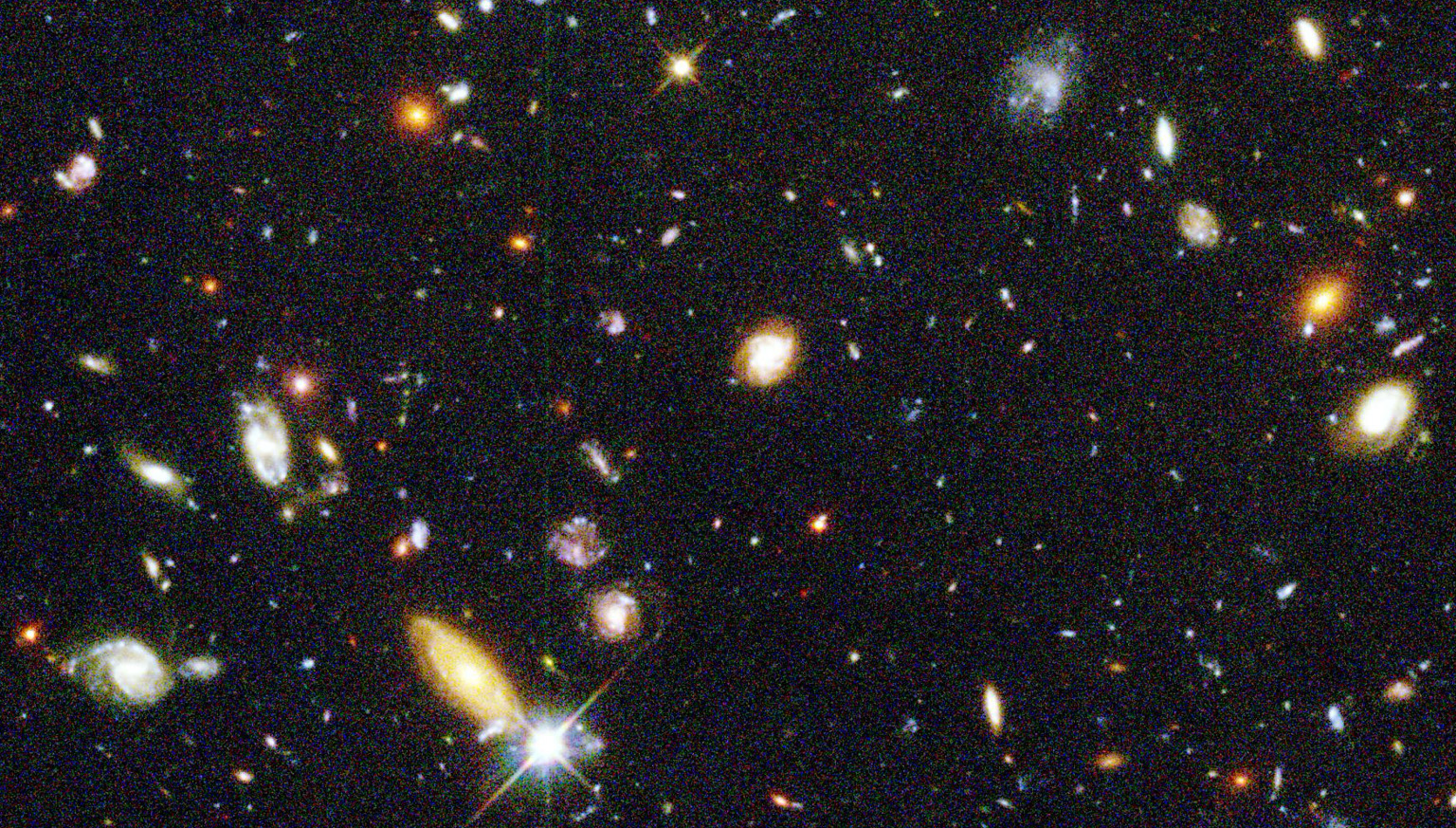
If you held a match at arm’s length up to the sky and saw what was obscured by the matchhead, that would correspond to the amount of space that appears in this Hubble photo. Observations from the deep view of the Hubble space telescope suggest that there are about 200 billion galaxies in our universe. However, newer research suggests that estimate is ten times too small. In other words, there are at least two trillion galaxies in our universe. If our galaxy and Milky Way is any indication, that means there are two million trillion stars in our universe. Two million trillion stars.
Thus there are more stars in the heavens than the number of grains of sand on every beach, and in every desert on the Earth. Many, many more. Next time you let sand sift through your hand, think of each grain as a different star. You could process all the sand in the world, assigning a different star to every grain, and never run out of new stars.

As Abraham recounted when the Lord showed him the stars, “He put his hand on my eyes and I saw those things which his hands had made, which were many; and they multiplied before mine eyes, and I could not see the end thereof (Abraham 3:12).
An even greater number of planets orbit many of those stars. The Lord said to Moses “And worlds without number have I created, and I also created them for mine own purpose; and by the Son I created them, which is mine Only Begotten” (Moses 1:33).
None of this was known to science in the 1830s when the book of Moses and the book of Abraham were revealed to the prophet Joseph Smith. Before 1923, scientists did not know of any other galaxy in the universe other than our own Milky Way.
Before 1988 astronomers had not detected any planets outside of our solar system. The initial detection of a single exoplanet was confirmed in 1992. Quoting from a 2021 article that just appeared in Physical Review Letters, “almost all exoplanets we now know were only discovered in the last decade with the majority found in the last five years.” The authors state that there are 4,324 confirmed exoplanets and an additional 5,695 candidates under review. They estimate there are an additional 300 billion exoplanets in our galaxy alone.
As the prophet Enoch expressed, “And were it possible that man could number the particles of the earth, yea, millions of earths like this, it would not be a beginning to the number of thy creations” (Moses 7: 30)
We’re taught that Heavenly Father created the universe through his Son, Jesus Christ. Writing of this, the apostle Paul explained to the Colossians, “For by him were all things created, that are in heaven, and that are in earth, visible and invisible, whether they be thrones, or dominions, or principalities, or powers: all things were created by him, and for him:” (Colossians 1:16).
The vastness of creation extends not only in space but also in time. As we gaze through space telescopes at the most distant galaxy that is observable, we’re actually looking back into deep time, near the beginning of the universe. Our universe appears to be 13.8 billion years old. The heavier elements in our planet, the gold in my wedding ring, or the platinum in the catalytic converters in our cars did not come from our sun.
At this point, our sun is only hot enough to fuse hydrogen to produce helium.
Instead, these elements must have come from fusion reactions far hotter than our sun, likely from a supernova explosion.
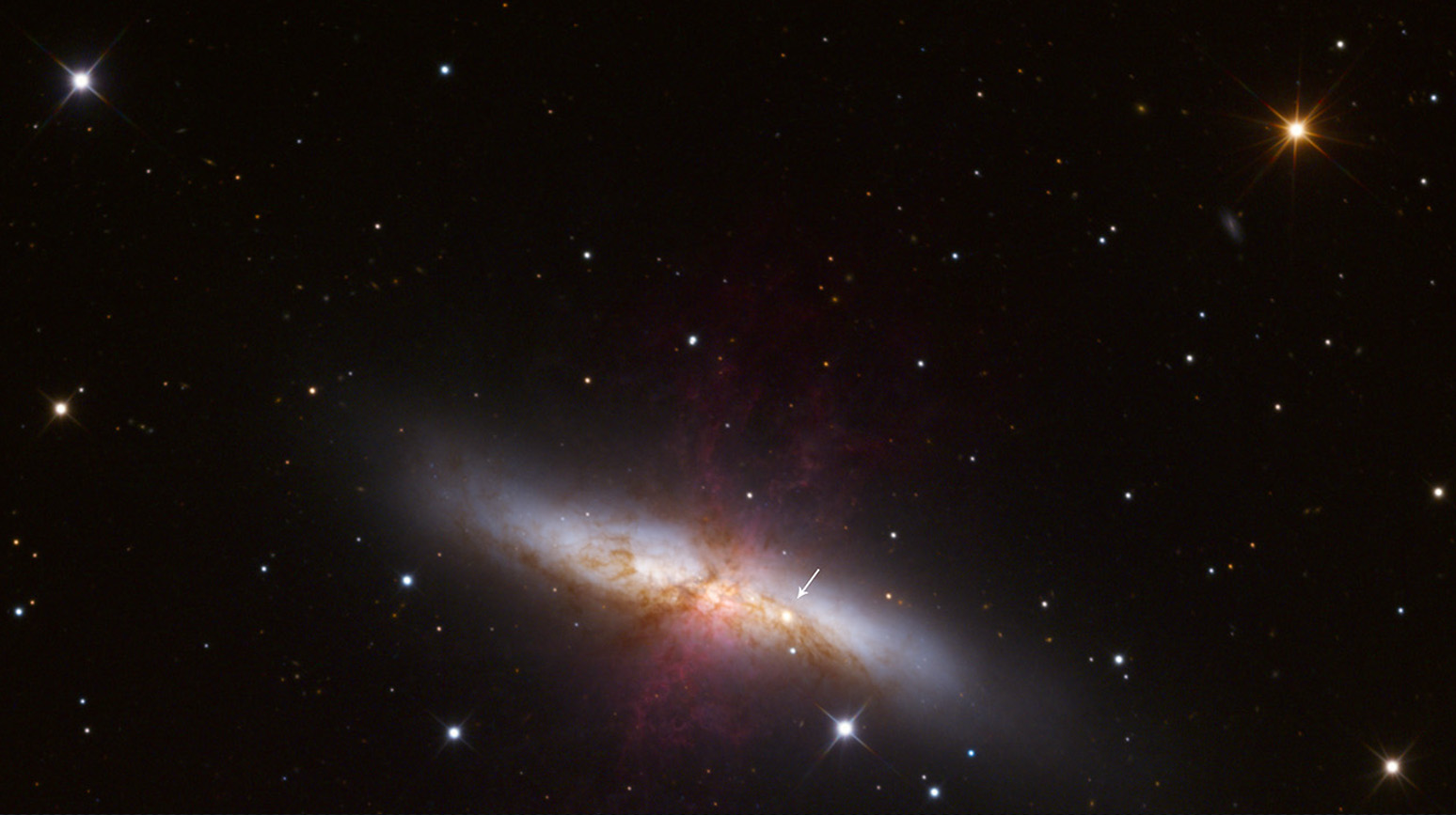
This type of supernova explosion was first detected by scientists on August 17, 2017. They carefully monitor laser beams at the LIGO observatories in Hanford Washington and Livingston, Louisiana, while the Italians near Pisa monitored laser beams at the Virgo Observatory. Basically they’re measuring laser beams that stretch over kilometers to see if there’s an infinitesimal diversion of the beam from its course. On October 17, 2017, they simultaneously detected the pulse of gravitational waves from the collision of two neutron stars. Because they were able to triangulate, from the three laser beams they were able to get optical confirmation from the telescopes both in space and down in Chile. The nuclear fusion that was ignited by the collision of those two neutron stars was so hot that it produced a large dust cloud of gold and many other heavy elements not produced by our sun.
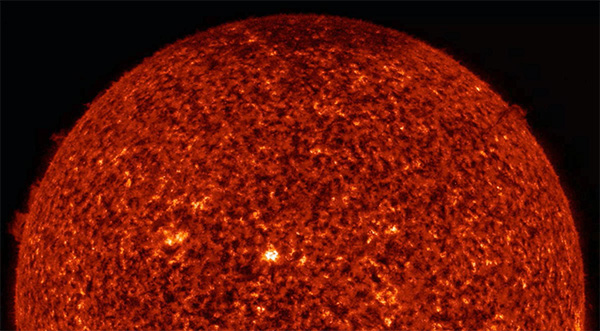
So even though as primary children, we sing that we are sunbeams, The composition of our bodies has little to do with the helium produced by the young star our planet orbits. Instead, we are composed of stardust. It appears that the sun and the Earth were formed around 5 billion years ago from dust and ejecta from a supernova explosion. Perhaps this is what Elder Russell Ballard referred to as “matter unorganized.” Joni Mitchell had it right: we are stardust.
In the cosmic time scale, our sun and the Earth are of similar age. It’s possible that the Earth may have been solidified before intense gravitational forces ignited the fusion furnace of the sun and perhaps even possible that the sun was not ignited before the moon was knocked off through a planetary collision. If so, imagine what the first light from that newest of stars, our sun, reflected from a previously darkened moon, must have looked like.
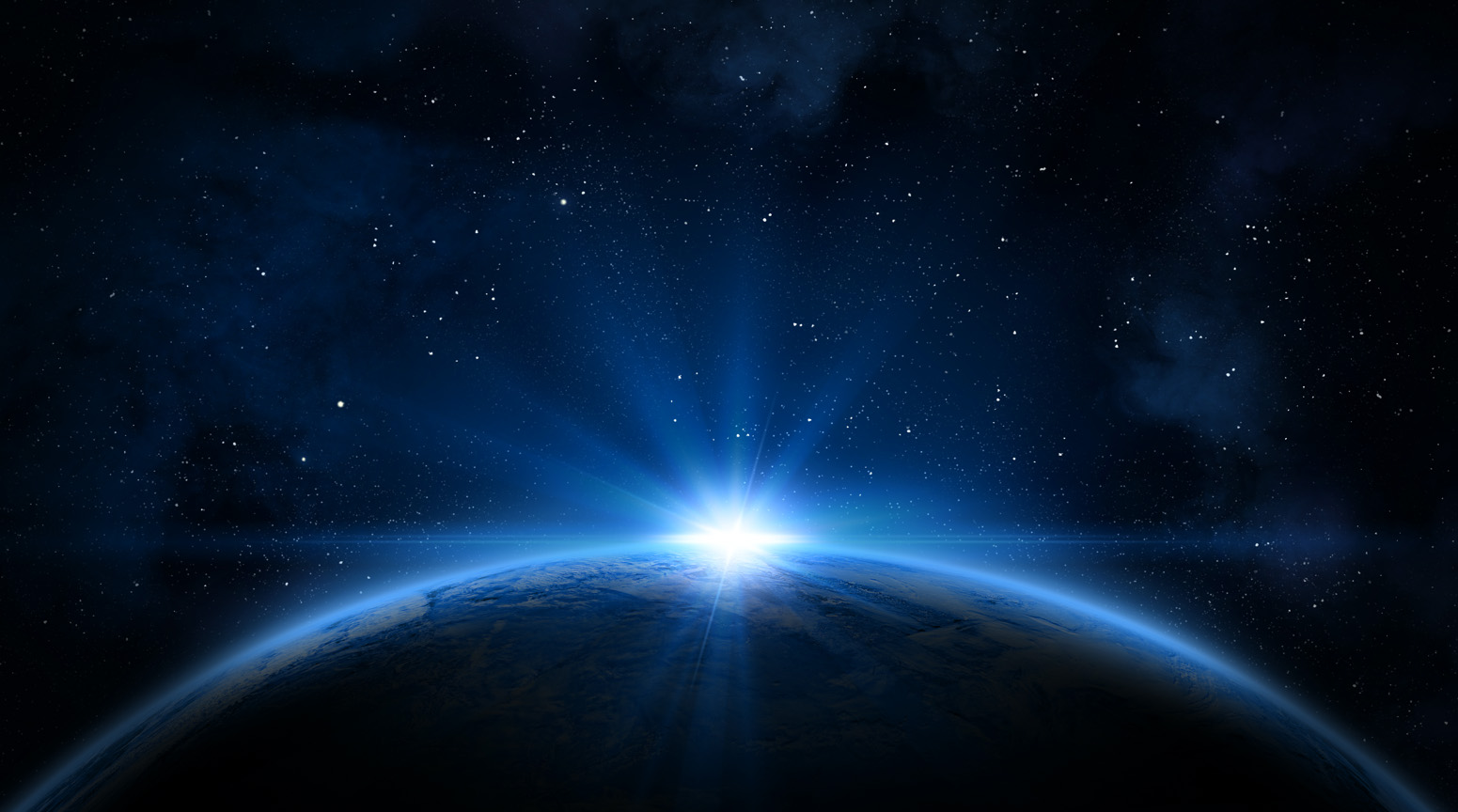
As the Lord taught Abraham:
“And the earth after it was formed was empty and desolate because they had not formed anything but the earth and darkness reigned upon the face of the deep; and the Spirit of the Gods was brooding upon the face of the waters. And they (the Gods) said: Let there be light; and there was light.” (Abraham 4:2-3)
The majesty of creation can also be seen at the macro level. In fact, he who created the stars and the galaxies is aware of the fall of a single sparrow (Matthew 10:29). Jesus taught his disciples:
“Consider the lilies how they grow: they toil not, they spin not; and yet I say unto you, that Solomon in all his glory was not arrayed like one of these. (Luke 12:27)
This photo is of Kungsängslilja in Uppsala, Sweden named after the king.

The Savior, of course, was likely trying to encourage his disciples not to allow temporal concerns to interfere with their apostolic callings. I suggest however, that His admonition to consider how lilies grow since they toil not, they spin not, and yet produce a glory which exceeds that of Solomon bears further scientific consideration.
This is a photograph I took in the San Rafael Swell, Utah of one of the most endangered species on planet Earth.
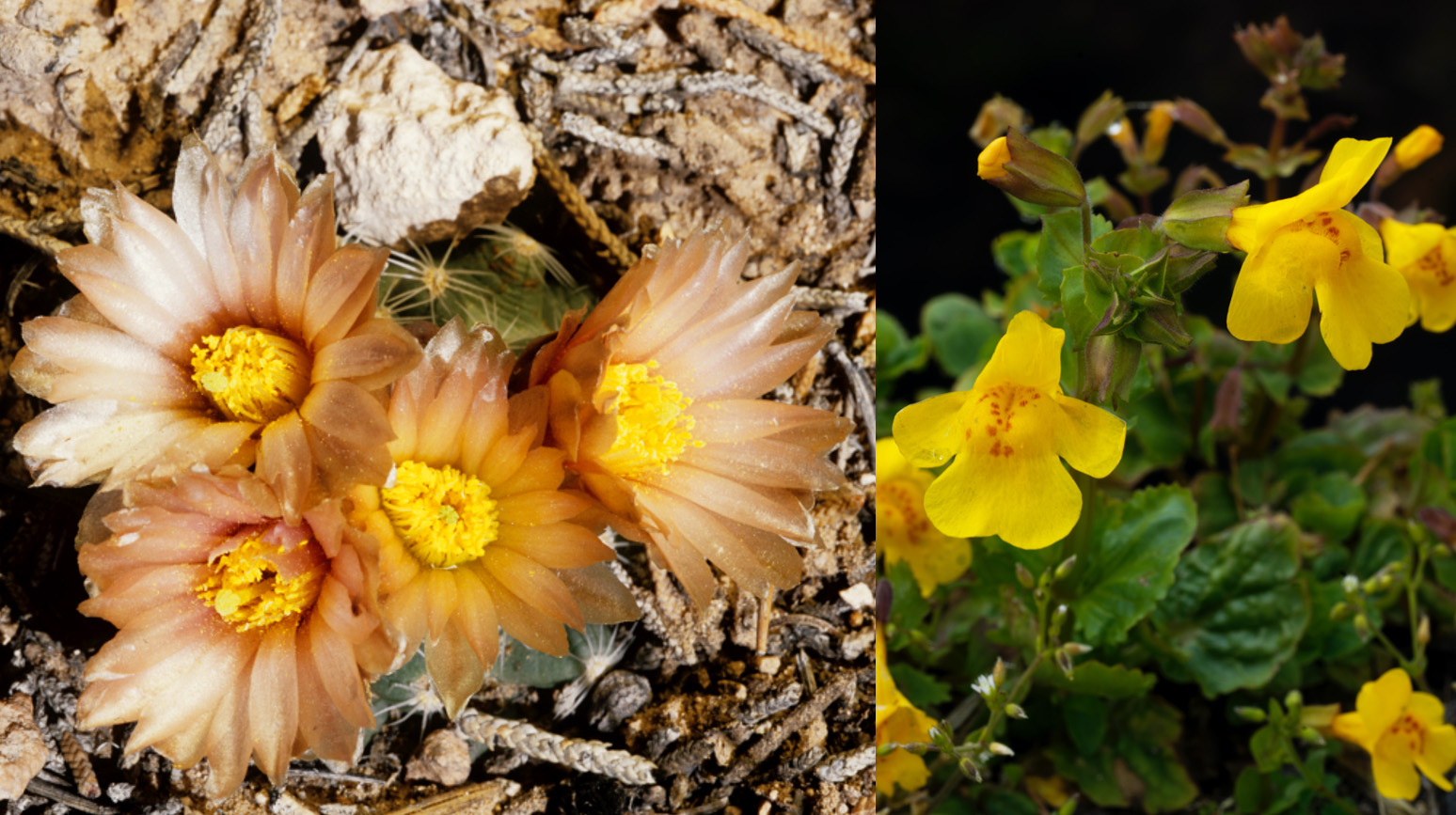
Pediocactus despainii spends its entire life underground and then right around Easter pops up and flower and then retreats. The next photo is of a Mimulus monkey flower that Barbara and I photographed teetering on the edge of a fumarole at a geyser in Yellowstone National Park.
In 1648, Jan Baptista van Helmont, a Flemish biologist, performed a simple but elegant experiment that has profound implications for our modern age, particularly while there is a meeting this week of the world’s nations in Glasgow on climate change. He planted a five-pound willow and 200 pounds of soil. He let it grow five years. He then removed the flourishing plant from the soil and found it to weigh 169 lbs 3 oz. He then weighed the soil and found that the soil weighed 199 lbs 14 oz. In other words, what von Helmont found that only two ounces of soil produced a 164 pounds 3 oz of willow. If we exclude the mass of water, we’re still left with most of the willow. Two oz of soil produced that massive willow, that’s what he found.
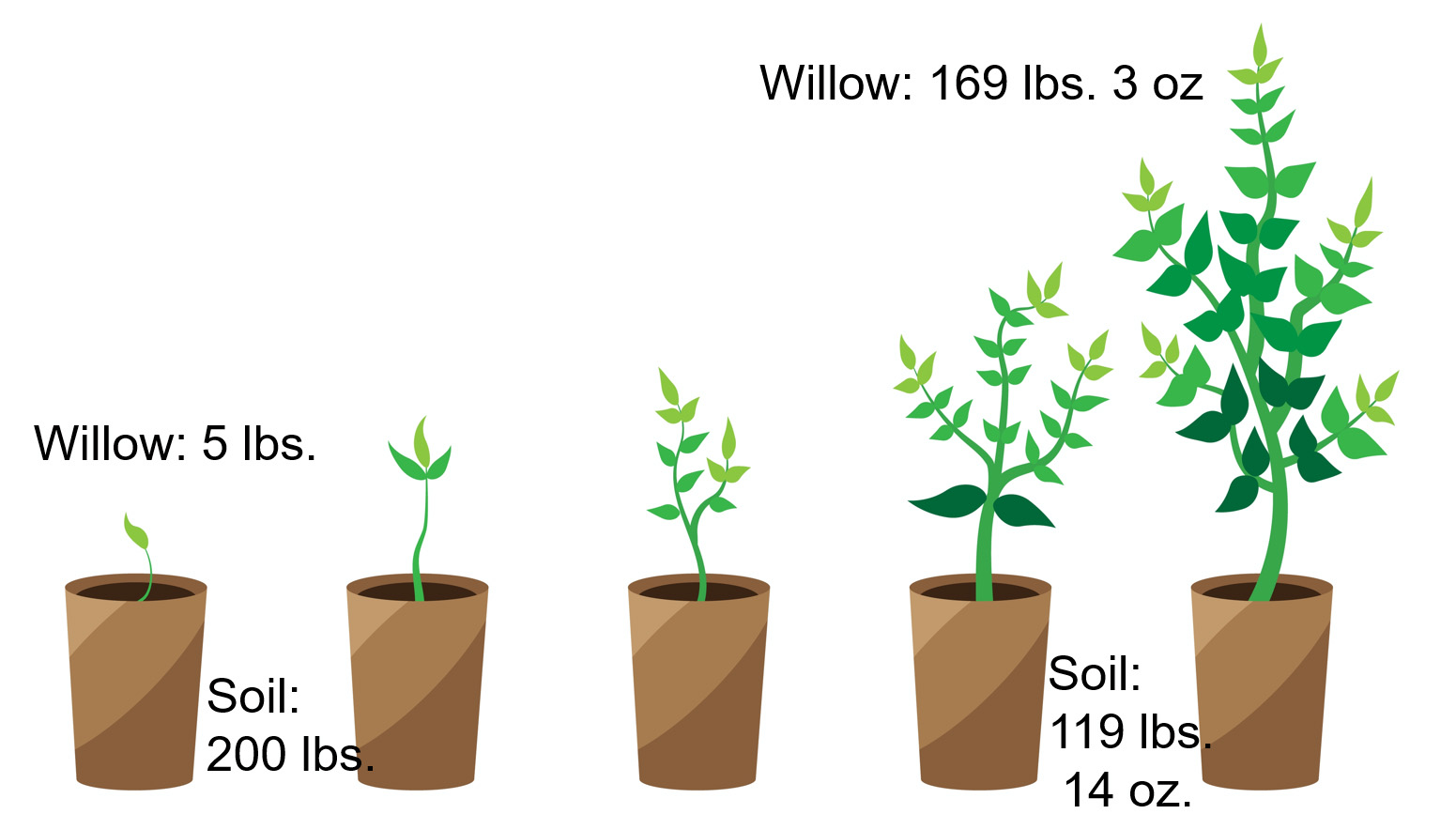
Where did that mass come from? Out of thin air? The answer of course, is, yes. It did. Most of the mass of the willow came straight from thin air. Through the miracle of photosynthesis, plants use light from the sun to combine carbon atoms from carbon dioxide. With this they make sugars, carbohydrates, and ultimately a variety of molecules.
Far earlier in Earth’s history, stromatolites, rounded boulders, composed of cyanobacterial layers, have been produced by the same miracle of photosynthesis. This is a photograph from Hamilton Pool, in Shark Bay, Western Australia.
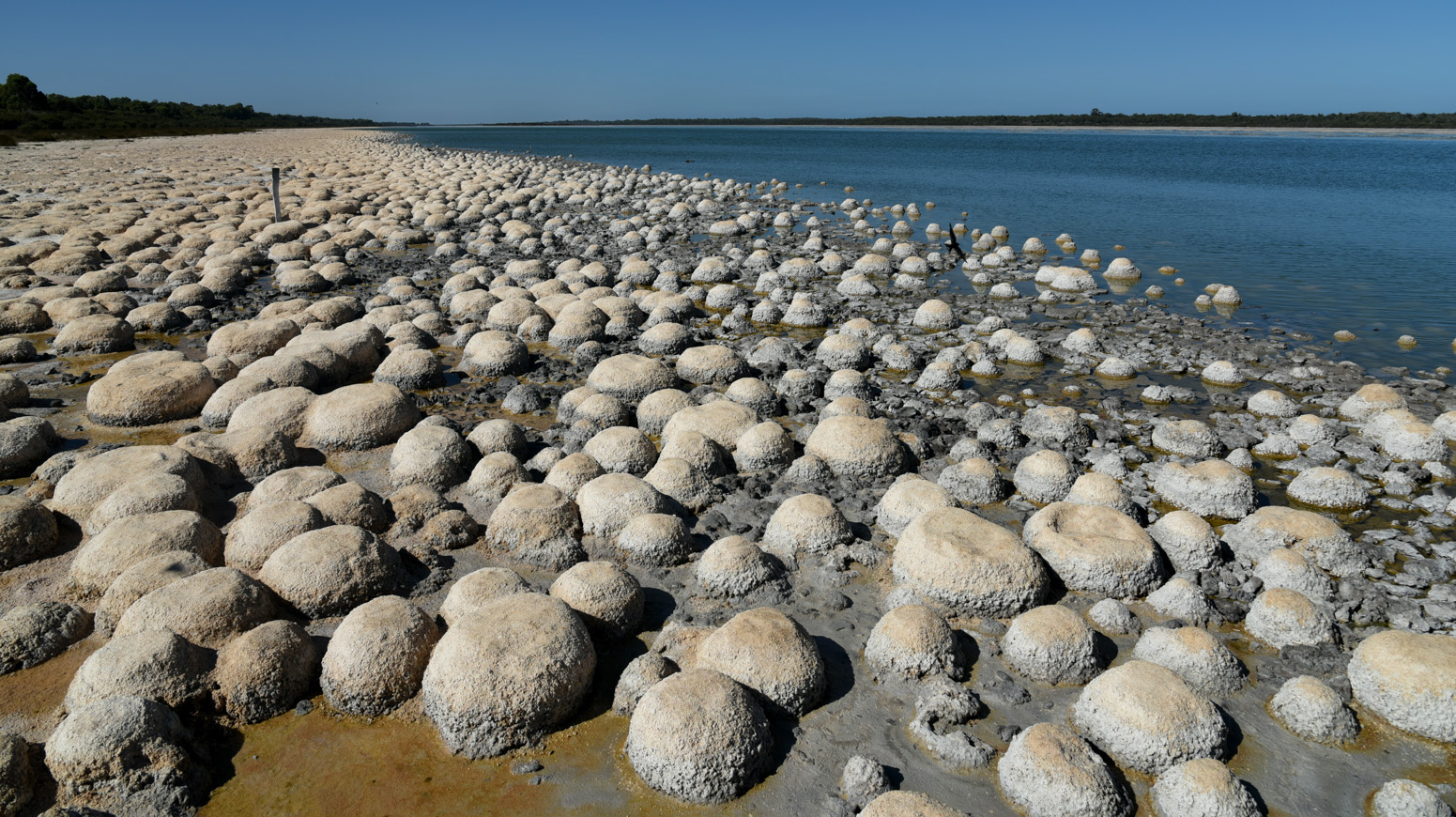
Cyanobacteria continued to bubble up oxygen as they split water into its components hydrogen and oxygen. They use the electrons captured from splitting water to power a chemical reaction that produces sugars and carbohydrates. So does every plant on the planet now.
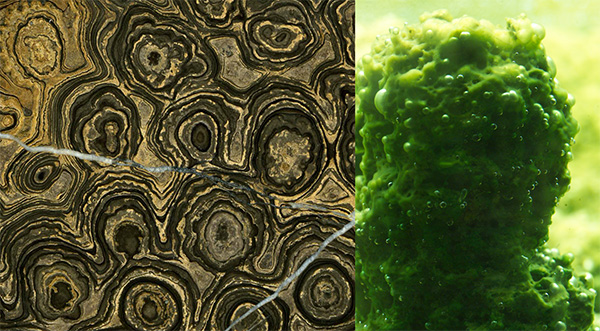
Cyanobacteria formed the earliest known fossils on planet Earth with some dating back to 3.3 billion years ago. Ancient stromatolites continually split oxygen and hydrogen, from water, day after day. Just like that stromatolite I photographed there at Shark Bay, you can see the little bubbles, bubbling up of oxygen everyday, everyday they bubble up. At nighttime they rest. During the daytime up comes the oxygen. This went on until 600 million years ago, when atmospheric oxygen reached 1% of current levels. That amount of oxygen screened out enough ultraviolet light that life could survive at the surface of the sea without having its DNA scrambled. There was a resultant of life explosion in the Cambrian period including photosynthetic life at the surface of the sea. In a relatively short additional 200 million years, oxygen increased to 10% of current atmospheric levels. That launched the Silurian period since enough oxygen was in the atmosphere to block UV light so that life could live on the surface of the land. As Nephi said, “thus we see by small means the Lord can bring about great things.” (1 Nephi 16:29). Now this vast period of time required to construct the oxygen atmosphere of the Earth approximately 2.9 billion years obviously does not correspond to the creation chronologies produced by ministers of religion in the 17th century. It would have been very difficult to generate the oxygen atmosphere of the Earth in seven 24-hour days or even in 7,000 years and without adequate oxygen produced by these cyanobacteria and other plants, animals and even Adam and Eve would have perished on this planet.

In 1654, Irish archbishop James Ussher published his deduction the Earth was created in seven 24-hour periods beginning on October 23rd 4004. He did this by you looking at the genealogies in the Bible --- so-and-so was the son of so-and-so -- and estimating about a 20-year generation together with Jewish chronologies determined that the earth was created on October 23 4004 BC. Not to be outdone, English churchman John Lightfoot specified that Earth was created on Wednesday, October 23 4004 BC at 9:20 AM.
One year when I was teaching undergraduate biology at Harvard on October 23. I mentioned this to Barbara who was always so wonderful, so she baked a big cake of the Earth showing the continents, with the motto that said “Happy Birthday Earth”.
So I carried this cake into my undergraduate biology class and we all sang happy birthday to the planet. We cut that cake at 9am on October 23rd. Unfortunately, it was not a Wednesday, it was a Monday, but you can’t have everything.
In fairness to Archbishop Ussher, I should indicate that a committee of our church in 1920 used his biblical chronology to put in dates in the Book of Mormon. These dates do not appear in the first edition of the Book of Mormon and presumably on the gold plates from which it was translated. Given the possible reference to the Holocene megafauna of North American in Ether 9:19, I wonder if the Jaredites dates might be slightly off --say by 10,000 years or so --but I digress.
The creation account in the Pearl of Great Price includes a key addition to the Genesis text. Each of the seven creative periods is there referred to as a time, which perhaps indicates each creative period be of indefinite duration.
The contrast between Ussher's fundamentalist dogma of the age of the Earth and the restored gospel was emphasized by the prophet Brigham Young who said,
“I am not astonished that infidelity prevails to a great extent among the inhabitants of the Earth, for the religious teachers of the people advance many ideas and notions for truth which are in opposition to and contradict facts demonstrated by science. You take for instance our geologists, and they tell us that this Earth has been in existence for thousands and millions of years… in these respects we differ from the Christian world for our religion will not clash with or contradict the facts of science in any
particular. You may take geology for instance, and it is a true science.”
In the Pearl of Great Price, we're told that God planted a garden and instructed Adam and Eve to care for it. A garden of course (and I was Director of the National Tropical Botanical Garden for seven years, so I know a little bit about this), is an artificial assemblage of plants that differs from the surrounding environment. It's designed for a specific purpose. Therefore, it's very dangerous to assume that the conditions inside the garden of Eden reflected what was going on outside the garden.
“And I the Lord God planted a garden eastward in Eden” ... Can I stop here at sort of a Rodney Dangerfield moment, because botanists don't get a lot of respect? Can I just say that to gardeners and botanists this account seems to be a truly divine calling. Let me just start again:
“I the Lord God planted” . . .in fact I mentioned that to a colleague, a physicist friend and he said actually botany is not the world's oldest profession at all, it's physics because God separated light from darkness. And then a friend who was a lawyer said “where do you think the chaos came from?”
Back to our text, “I the Lord God planted a garden eastward in Eden and there I put the man whom I had formed. And out of the ground made I the Lord God to grow every tree naturally, that is pleasant with the sight of man and man could behold it. And it became also a living soul.” (Moses 3:81-9)
Fascinating to me that the Lord here teaches us that the trees and by extension other plants are living souls and have spirits.
I’ve always had an unusual awareness of plants. My earliest memory as a child was seeing irises growing along the ditch bank, or the rough texture of juniper berries in my hand. I can't go into the dentist's office without seeing the house plants there. I notice plants wherever they occur. I delight in their presence.
When I was a little boy my mother showed me how to put dry beans in a mason jar, put a moist cloth in there, and press them up against the glass. In a few days the beans germinated, and little seedlings reached for the light.

Now I know more about the processes involved in germination than I did as a boy, but this simple experiment still enthralls me. Perhaps Alma had a similar thrill watching the germination of seeds, a process he compared to the development of our faith:
“And now, behold, because ye have tried the experiment and planted the seed, and it swelled and sprouteth, and beginneth to grow, ye must needs know the seed is good.” (Alma 32:33.)
As a botanist I’ve spent my life studying plants particularly in tropical areas. Much of my career has been spent studying plants as possible sources of new pharmaceuticals for our most serious maladies. About 50 percent of all the pharmaceutical compounds prescribed in this country are based on plants and other forms of biodiversity. I usually work alone and when I walk through the rainforest and I see the light filtering through the upper canopy of leaves, I feel as if I’m in a cathedral. I feel the spirit of the Lord and I’m overwhelmed by the beauty surrounding me.
I think Tennyson expressed a similar view in his poem “Flower in the Crannied Wall”:
“Flower in the crannied wall,
I pluck you out of the crannies
I hold you here, root and all, in my hand
Little flower—but if I could understand what you are, root and all, and all in all,
I should know what God and man is.”
(Alfred, Lord Tennyson)
Let's talk about the people. A major purpose to creation accounts is to emphasize the divine provenance of humankind. When Moses was tempted by Satan he responded, “Who art thou? For behold I am the son of God, in the similitude of the Only Begotten, and where is your glory, that I should worship thee?” (Moses 1:13)
So it is with all people. All of us who share this planet, all of us are sons and daughters of God. We're taught in the scriptures that human beings were placed on Earth at the end of creation, and on this point science and scripture agree: our advent on Earth is more recent than other species.

One consequence of our relatively recent origin is our extraordinary genetic relatedness. Unlike oak trees or squirrels, our species is genetically cut from the same cloth. Our genetic homogeneity is such that many scientists argue that the concept of biological races useful in categorizing wildflowers and wildlife should not be applied to human beings. We’re just too deeply related. Because of our shared ancestry, only a very few genes separate populations. That shared genetic basis of our species is so deep that if everybody perished except say the Tongans or the Hottentots we'd lose at a maximum, at a maximum, only two three to three percent of our genetic diversity. There are certain tribes in Africa such if they were the only ones spared some global calamity, we would lose virtually none of our genetic diversity as a species because we are so deeply related to each other. All the people who share this planet are indeed brothers and sisters and that is a scientific fact.
As an ethnobotanist I’ve studied with indigenous peoples ranging from the islands of the South Pacific and southeast Asia to the frozen tundra regions high above the Arctic Circle among the reindeer herders.

Although the languages and cultures and religions of these indigenous people are diverse, they all agree on one thing: the Earth is sacred. The sacredness of the Earth is also emphasized in the Pearl of Great Price:

“And it came to pass that Enoch looked upon the earth and he heard a voice from the bowels thereof saying: wo, wo is me the mother of men; I am pained, I am weary because of the wickedness of my children. When shall I rest and be cleansed of the
filthiness which has gone forth out of me? Will my Creator sanctify me, that I may rest, and righteousness for a season abide upon my face?”
And when Enoch heard the earth mourn, he wept and he cried unto the Lord saying: O Lord, wilt thou not have compassion upon the earth? (Moses 7:48-49)
Many indigenous cultures believe this planet is animate, that it has a spirit, and that it is sacred. That's why so many of them pray before they'll even cut a tree down or begin a hunt. They promise to use nature's bounty with reverence. Indigenous people also believe that human beings are sacred and have spirits. It's very poignant to me that as early European explorers traveled the Pacific and traveled to North America and contacted indigenous peoples and asked them who they were a single universal answer emerged. The Navajos for example said we are the Dine. The Dine, of course, in Navajo means” the people”. The Polynesians said we are tanata or kanaka, which, of course, means “the people”. Now some early explorers mistook these terms as referring to tribal affiliations. Yet what the indigenous people were saying is we're people, we're just like you, we're people. Indigenous peoples, in my experience, believe that people are sacred and have spirits. In many indigenous cultures, such as the Maori, there's a belief that one's departed ancestors travel with you, that they're ever present. They're deeply aware of the progress of their descendants on Earth, therefore individuals are treated with respect not just because they are sacred, but they are surrounded with a cloud of witnesses from the spirit world.
Let me conclude on conservation as an act of worship. These three principles embedded within scriptural accounts of creation; namely the Earth is sacred, plants and animals are beloved by Heavenly Father, and human beings are of divine heritage, provide a strong gospel basis for conservation. As appropriate for the kingdom of heaven, which Jesus tells us is likened to a net that was cast into the sea and gathered of every kind (Matthew 13:47), it's understandable that reverence for the Earth will be expressed by different Latter-Day Saints in different ways. By considering the handiwork of God that surrounds us we can act as individuals, groups, communities and even nations to work together to protect creation. If done with reverence, it's my belief that these acts of protection can be transformed into worship. At a minimum, we need to avoid needlessly damaging the creation. If you love the Artist do not slash His painting. I’ll say that again, if you love the Artist do not slash His painting.
For example, we can reduce the waste we produce in our daily activities. What a thrill to have the BYU official here responsible for sustainability. We live in a day in which Moroni said there would be “great pollutions upon the face of the earth…when there be many who will say, do this, or do that, and it mattereth not, for the Lord will uphold such at the last day” (Mormon 8:31.) Contrary to what those people say we know that what we do does matter and that we can lessen our impact by reducing, reusing, recycling. A little secret: in our family is that we believe all life is sacred. This brings me into trouble, because I’m afraid of spiders, but my wonderful wife, who should have been an entomologist, carries them out alive at my request. I believe all life is sacred and the more I study it as a biologist, the more convinced I am the majesty of the creation.
Perhaps in coming years, all of us will know the number that refers to the tons of carbon dioxide that we personally produce as our carbon footprint, the same way many of us know our cholesterol number. One of the best ways to reduce our personal carbon footprint is to plant a tree. In this photo, in Tuvalu which is threatened with destruction by loss under the waves as the sea level rises, we funded these women to plant mangrove trees in return for building them a women's handicraft center.
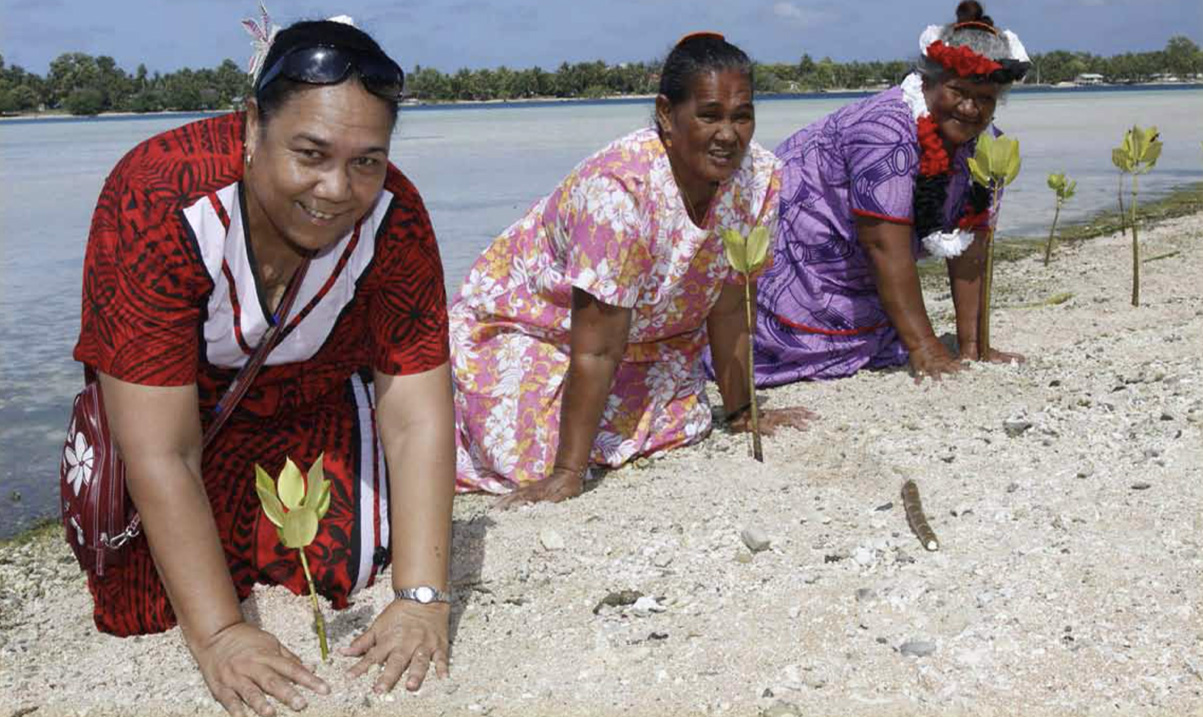
We know from van Helmont’s experiment that most of tree mass is actually sequestered carbon dioxide, so you can plant a tree and have a positive effect on the global carbon balance. We can also plant a garden. In the beginning Adam and Eve were asked to tend the garden. I don't think that dictate from Deity has ever been rescinded. Modern prophets have repeated requests from Brigham Young to “beautify your gardens, your houses, your farms; beautify the city. This will make us happy and produce plenty.” President Kimball talked a lot about this as did President Hinckley.
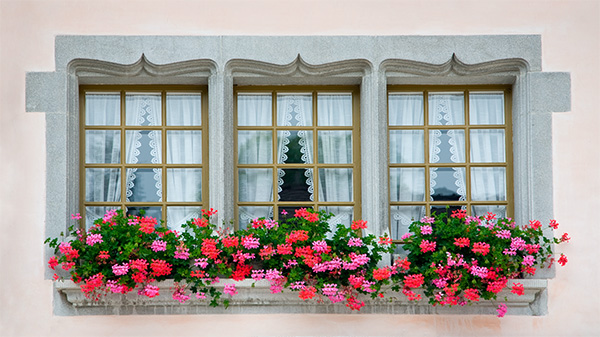
Even those who live in modest circumstances can plant a flowerpot in a windowsill. We can also treat our pets, livestock, and wild animals with kindness and care and dignity. We should receive all with gratitude for the bounty of the creation. The Lord said in the Doctrine and Covenants Section 89 that “all these are to be used with prudence and thanksgiving”. (DC 89:11). We can also help support local parks, national forests, and national parks. I don’t know if you know this but a freshman botany class I taught here at BYU came up with the original plans for Rock Canyon Park, designed the park, made a movie in which we had Hugh Nibley speak. That movie and the book they wrote was taken back to the Forest Service in Washington DC, taken to the city fathers, and led to the creation with many other good people of Rock Canyon Park. I had the great honor to help the village chiefs in Samoa and the Territorial government of American Samoa with the U. S. Congress to create the 50th national park of the United States.

This protects the largest acreage of tropical rainforests on US soil, spans three islands, and has some remarkable coral reefs.
It's a companion to a park that Barbara and I helped build in Western Samoa. Here we have a walkway tower that shows that the people could produce income without allowing the forest to be cut. People come from all over the world. That's my daughter Jane there walking across this walkway.
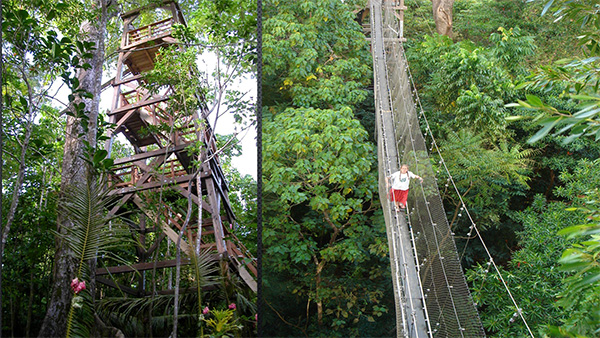
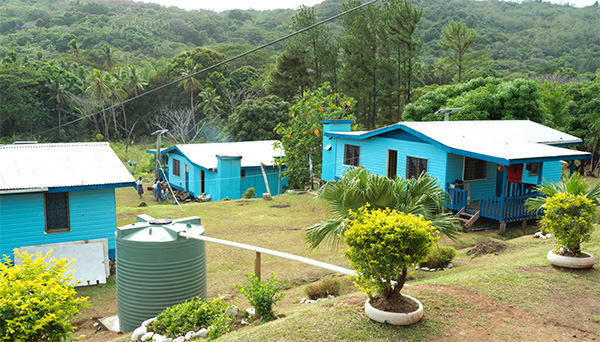
We can also join with other members and non-members in useful conservation initiatives.

Barbara and I had the great pleasure of going to a remote island in Fiji to dedicate the first decent school this village ever had. In return the village agreed to protect their mangrove forest. This little girl on Barbara’s left came up and asked if she we could take her photograph. Some other children ran up. We found out this little girl walks every day eight miles to school just to get there and she's barefoot. This is what school means to the people.

The chiefs responded to us by displaying a sperm whale tooth they have here and promising that they would protect that forest. Barbara and I together in Samoa with Ken Murdock, Rex Maughan, and other friends and family members created Seacology which is now headquartered in Berkeley. Seacology has built over 350 schools, medical clinics, water supplies, and sustainable electrification schemes in 65 different nations preserving over 1.5 million acres of rainforest reef. This place in the photograph in Madagascar was really touching. This is the southern part of the island, so helicopters can't get there. These people needed a school and promised that they would protect their forest and the lemurs that lived there. It turned out a river had to be crossed by children from another village to attend. It's seasonally high so we built a bridge for all the children to get from that village to this new school.

What I haven't told you is that this village is three days walk from the nearest road, so every board, nail, and piece of cement in that school was carried by the villagers on their backs for three days.
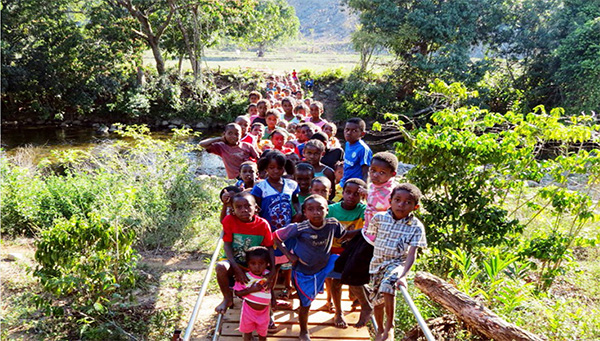
Today we have these little children getting into a decent school.
Coastal mangroves sequester more carbon dioxide than any terrestrial vegetation, so we recently partnered with the government of Sri Lanka who agreed to protect all the mangroves in the country in return for us providing micro-loans and basic business education for 12,000 impoverished coastal women.

As part of this we built a mangrove museum and three nurseries in different parts of Sri Lanka each producing 500,000 mangrove seedlings to be replanted.
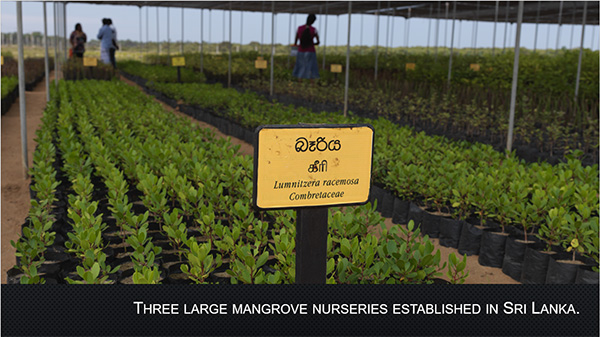
We met with the President and Parliament. They tasked their military to protect the mangroves. They took us out on a war boat; if you cut down a mangrove tree, you just might have a 105 millimeter shell coming your way. If you live through that, the coastal women are going to get you, so these are probably the best protected mangroves in the world. As a result, Sri Lanka was chosen to be head of the Commonwealth's carbon reduction program and we were nominated in Oslo for a special prize. In our experience indigenous people act as force multipliers. Through really precise injections of funds to build community projects, we're able to get some remarkable preserves for conservation.
In vision ---and let me conclude here -- Nephi saw that our members of the church would be “few” but also “be upon all the face of the earth”. We are citizens of over 160 countries. As members of the Lord's restored church, we speak 178 different languages. I believe even though we're few, we have a global platform that few other organizations have and then we have an opportunity to emerge as leaders in the international effort to protect the Earth.
We can, in our own lives, can be examples in reverencing the Creation. We can be exemplars of kindness and civility. We can seek to resolve our differences through discussion instead of violence and aggression.
War, in particular, has a terrible impact on the environment even though unfortunately it’s sometimes necessary to take up arms to protect our freedoms. But it's instructive for me to study the writings of the latter-day prophets who have consistently warned over nearly 70 years about the dangers of nuclear weapons which would have an overwhelming impact, negative impact, on the Creation if they’re ever used.
Ongoing environmental degradation and destruction of biodiversity has ominous consequences for poor people who do not have the material means to protect themselves against toxic waste, toxic air, water pollution, wildfire, increasing temperatures and rising sea levels. As Latter-Day Saints, I believe we should strive to exemplify compassion for others particularly for those who are impoverished. And as we seek to celebrate the Lord's Creation through our reverence for His handiwork we can build bridges with many other good people who do not share our faith.
I know that many scientists don't sense the touch of God in the beauty of a flower, or the majesty of stars at night, but I am unaware of any scientific experiment that proves that God does not exist or that He does not love us. As Alma said “I have all things as a testimony that these things are true” (Alma 30:41). I understand that many good people, some in our own community, believe that religious and scientific viewpoints cannot be reconciled. However instead of a conflict between science and religion, I perceive a vast, panorama that's been going on in this creation for nearly four billion years. We worship somebody who can foresee the loss of 116 pages of manuscript 2200 years in advance. I worship a Creator who could build an oxygen atmosphere for this planet over geological time. As Brigham Young said, and I’ll conclude on this, “Our religion is simply the truth. It is all said in this one expression—it embraces all truth wherever found in the works of God and all the works of God and man that are visible or invisible to mortal eyes.”
How wonderful to know that the Creator of such a vast and beautiful universe, at both the macro and the micro scales, is concerned with the details of our individual lives. I suggest that we can show our reverence and worship by caring for the details of His creation.


